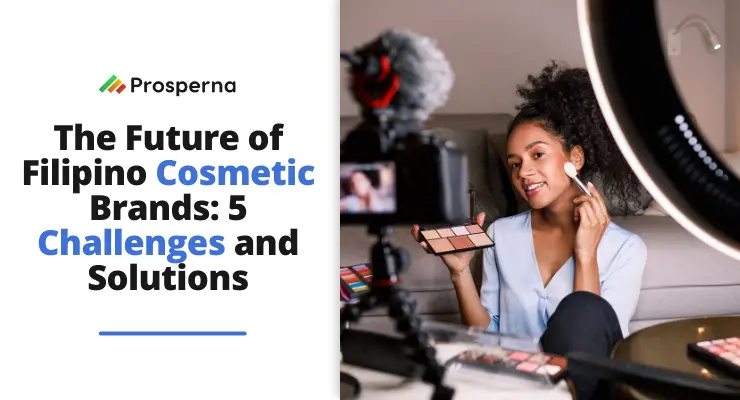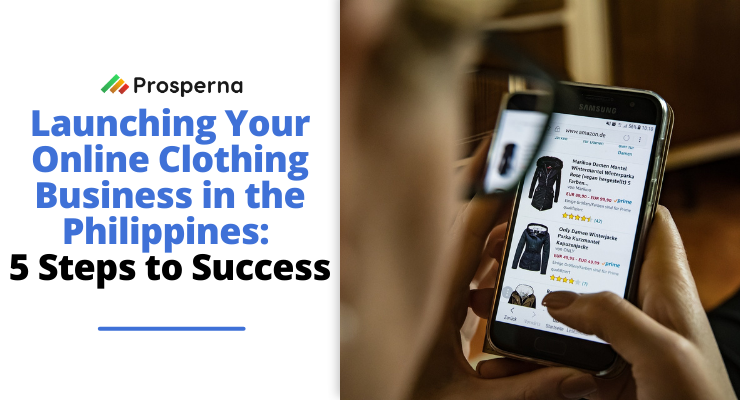The Philippine cosmetic industry is a $1.5 billion industry, and it is expected to grow at a rate of 10% per year. This growth is being driven by a number of factors, including a rising middle class, increasing urbanization, and growing awareness of beauty and personal care.
However, despite the industry’s potential and success stories, many Philippine cosmetic brands encounter several common challenges that hinder their growth and sustainability.
In this blog post, we will explore five critical challenges faced by cosmetic brands in the Philippines and delve into practical solutions that can help overcome these hurdles.
Challenge #1: Regulatory Challenges
Philippine cosmetic brands often face stringent regulations and complex registration processes. These regulations, set by government agencies like the Food and Drug Administration (FDA), aim to ensure the safety and quality of cosmetic products.
Some common regulatory challenges faced by Philippine cosmetic brands include:
- Product Registration
- Ingredient Restrictions
- Labeling and Packaging Compliance
However, complying with these requirements can be time-consuming and costly, especially for smaller brands with limited resources.
To navigate the country’s regulatory landscape effectively, you can consult with regulatory experts or seek assistance from consultants specializing in product registration.
These professionals can provide guidance on the requirements, assist in compiling necessary documentation, and streamline the registration process.

It is crucial that you conduct thorough research on ingredient restrictions, labeling guidelines, and GMP requirements to ensure that your products meet the necessary standards.
Partnering with local manufacturers who have experience producing FDA-compliant cosmetic products can also be advantageous. These manufacturers are already familiar with regulatory requirements and can guide you in formulating products that meet the necessary standards.
Regularly visit the FDA website or subscribe to newsletters and industry publications that provide updates on regulatory developments. Being proactive in staying informed can help brands adapt their processes and formulations accordingly.
Challenge #2: Intense Competition
The Philippine cosmetic market is highly competitive, with numerous local and international brands vying for consumer attention. Established global brands often have significant marketing budgets and brand recognition, making it challenging for local brands to stand out and gain market share.
To overcome this, Philippine cosmetic brands should identify and emphasize their unique value proposition. This could be a specific target market, innovative formulations, locally sourced ingredients, sustainability initiatives, or a strong brand story.
By highlighting what sets you apart, such as the use of local ingredients, showcasing Filipino culture, or supporting local communities, you can attract consumers who resonate with your distinctive offerings.
Collaborating with influencers and micro-influencers who align with your brand’s values and target audience can also be an effective way to generate buzz and reach a wider audience.
Influencers can provide authentic product reviews, testimonials, and create engaging content that resonates with their followers.
Here are some other ways you can try to beat the competition:
- Develop a well-crafted social media strategy, engage with your followers, and create visually appealing content.
- Utilize social media advertising, or digital and eCommerce platforms, like Prosperna, to expand your reach and boost sales.
- Collaborate with other local brands, beauty influencers, or even charitable organizations to help raise brand visibility and create unique offerings.
Challenge #3: Evolving Consumer Preferences
One of the Challenges faced by cosmetic brands in the country is the ever evolving consumer preferences and trends in the beauty industry. Today, consumers are increasingly concerned about the ingredients used in their cosmetic products and their potential environmental impact.
There is a growing demand for clean beauty, which includes products formulated without harmful chemicals and that are cruelty-free.
Sustainable packaging and eco-friendly practices are also valued by environmentally conscious consumers. A study showed that 67% of buyers find it important that their purchases are in recyclable packaging.
This is why Philippine cosmetic brands must stay updated with the latest beauty trends, ingredients, and packaging innovations to meet the ever-evolving demands of consumers.
Offering a diverse range of shades and products that cater to different skin tones, hair textures, and cultural backgrounds is essential.
Having personalized skincare consultations, providing shade-matching tools, or allowing customers to mix and match products to create their own customized beauty kits can also be good strategies to meet consumer preferences.
Also, actively listen to consumer feedback, conduct surveys, and engage with customers through social media platforms and customer service channels.
This allows you to gain insights into evolving preferences and make necessary adjustments to your product offerings and marketing strategies. Encourage dialogue and foster a sense of community among customers.
Failing to adapt to shifting preferences can result in decreased sales and a loss of relevance in the market.
Challenge #4: Supply Chain and Sourcing
Some cosmetic ingredients may be difficult to source locally, requiring brands to rely on international suppliers.
Limited availability of certain ingredients can lead to higher costs, longer lead times, and potential disruptions in production. Brands may also face challenges in finding specific ingredients that meet their quality and sustainability requirements.
As a solution, try to explore opportunities for local ingredient sourcing to reduce reliance on international suppliers.
Collaborate with local farmers, cooperatives, or community-based organizations to source indigenous or sustainably harvested ingredients.
Building partnerships with local suppliers can enhance supply chain efficiency and support local communities.
Also, develop contingency plans and alternative sourcing options to mitigate the risks associated with ingredient availability. Identify backup suppliers or explore substitute ingredients that meet the desired quality and performance standards.

Establishing a streamlined and efficient supply chain is crucial for timely production and delivery of products. Managing multiple suppliers, transportation logistics, and inventory control can be complex, especially for smaller brands.
Implement efficient inventory management systems to optimize your stock levels and minimize waste. Embrace technology solutions that facilitate real-time monitoring of inventory and demand, enabling better production planning and reducing the risk of stockouts or overstocking.
Inefficiencies in the supply chain can lead to delays, increased costs, and customer dissatisfaction.
Challenge #5: Brand Identity and Differentiation
Establishing a strong brand identity and effectively differentiating oneself from competitors is crucial for the success of Philippine cosmetic brands.
There are numerous brands offering similar products, so they struggle to create a strong brand presence and connect with their target audience effectively.
Address this cosmetic challenge by clearly defining your brand’s core values, mission statement, and unique selling proposition (USP). Identify what sets your brand apart from competitors and why customers should choose your products over others.
Then, develop a compelling brand story that reflects your values, heritage, or inspiration behind the brand.
Authentic storytelling creates an emotional connection with customers, enabling them to relate to your brand on a deeper level. Incorporate this narrative into your marketing materials, packaging, and social media content to reinforce your brand identity.
You can also invest in professional visual branding elements, including a distinct logo, color palette, and packaging design.
Consistent and visually appealing branding creates a strong brand presence and enhances recognition.
Or foster a sense of community and engage with your customers through various channels, including social media, customer reviews, and email newsletters.
Developing a compelling brand story, effective marketing strategies, and an engaging social media presence are key to standing out in a crowded market.
Cosmetic Challenges FAQ
What is the future of the cosmetic industry?
The global clean beauty market was valued at $7.22 billion in 2022 and is expected to reach $14.36 billion by 2028, growing at a healthy compound annual growth rate (CAGR) of 12.13% over the forecast period, according to a recent report by Daedal Research.
What are the challenges with cosmetic sustainability?
Things like excessive packaging, plastic pollution, and unsustainable resource consumption are huge problems within the cosmetic industry that have devastating impacts on the environment. Beauty packaging alone amounts to 120 billion units each year.
Final Thoughts
Successfully addressing these five challenges will position Philippine cosmetic brands for growth, sustainability, and success in the dynamic beauty industry. It is important for brands to remain adaptable, consumer-centric, and innovative while consistently monitoring market trends and consumer preferences.
By staying ahead of the curve, embracing challenges as opportunities, and implementing effective solutions, Philippine cosmetic brands can carve their niche and thrive in this competitive landscape.
Prosperna, Your Partner to eCommerce Success
Prosperna is an all-in-one eCommerce platform for Philippine businesses and digital creators. We are on a mission to empower 1 million Filipinos with simple and affordable eCommerce solutions.
In fact, we are super passionate about helping Philippine businesses and digital creators we’re giving you a free account forever!
Want to start selling online? Create your free-forever Prosperna account now.




